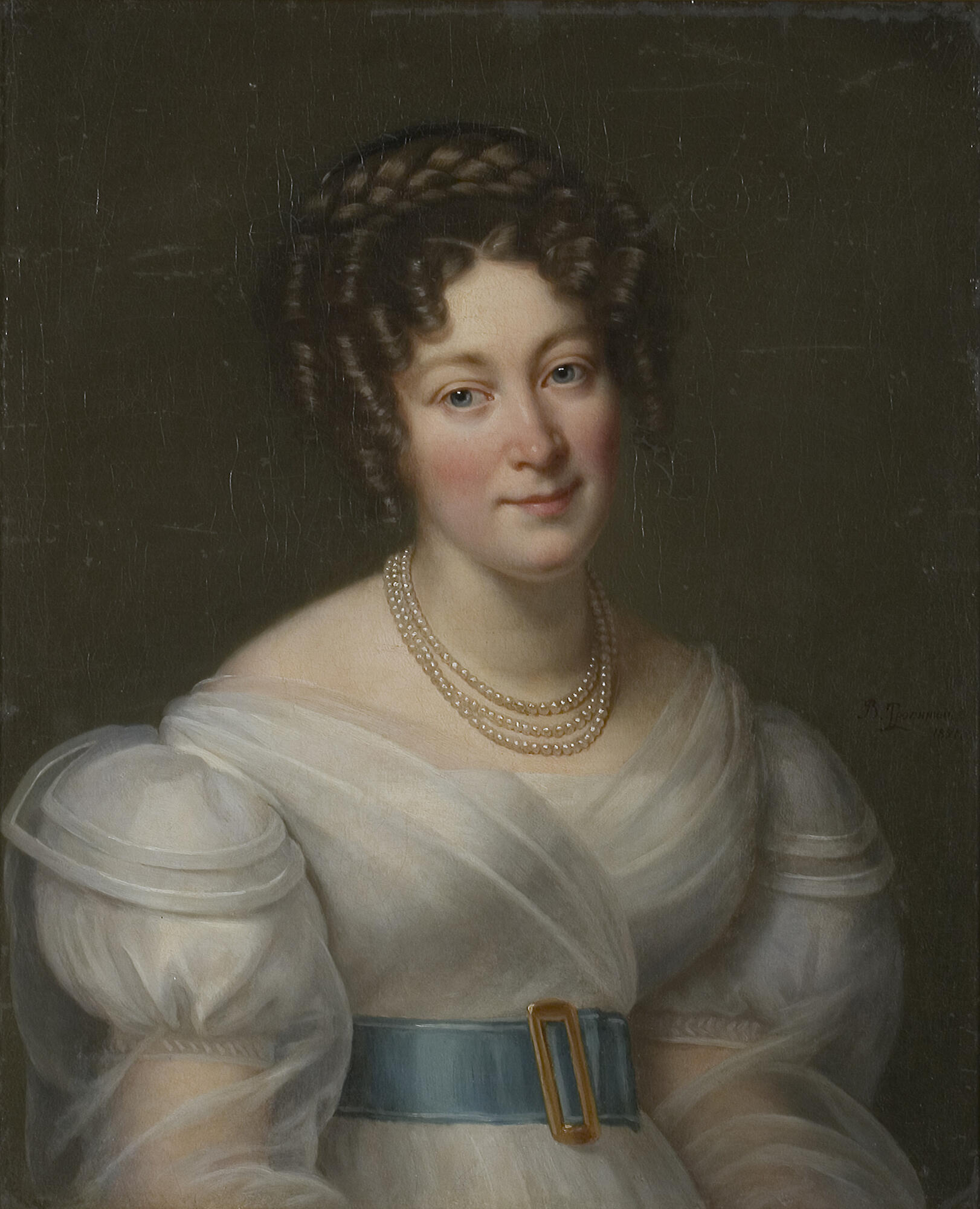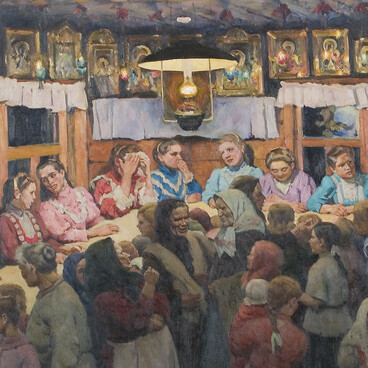The “Portrait of a Woman” housed in the National Art Museum of the Sakha Republic was created by an unknown artist from the club of Vasily Andreevich Tropinin.
Tropinin had a long artistic career. His art was highly correlated with the aesthetic ideals of that era. Being the “last son of the 18th century”, at the end of his life he grasped the main trends of the mid-19th century — loyalty to an accurate depiction and an analytical view of the world — and came close to the critical realism of the second half of the century. His talent undoubtedly influenced the work of many Moscow painters, and he formed with these artists the “Tropinin’s club”.
The painter had a special place in early 19th-century art. He spent 47 years of his life in serfdom. At the Academy of Fine Arts, he studied as a “non-degree student”. Tropinin received his freedom only in 1823, and only he received it: the landowner left his son as a serf. The artist’s canvases feature nobles, merchants, serfs, house-serfs, and artisans. Of particular interest are the works that depict people engaged in everyday work, surrounded by familiar objects. Such portraits can be considered prototypes of genre paintings.
Vasily Andreevich Tropinin stood at the origins of the famous Moscow School of Painting, Sculpture and Architecture. The public art class where the painter taught students on a voluntary basis was its forerunner. The class was opened in Moscow in 1833.
Tropinin’s art was highly appreciated by his contemporaries. He is considered the founder of an independent Moscow painting school. The canvas “Portrait of a Woman” vividly confirms it. However, we will not see in it the thoughtful Tropinin’s gaze that can emphasize the virtues of the sitter. This interpretation is closer to a salon portrait, simply painted, on a neutral background, without any accessories. In front of the viewer is a young lady in a ball gown. Her hair is arranged in a sophisticated hairstyle. Her smile and the outfit in exquisite bluish-white tones convey a rather sensual perception of the world. The artist lovingly depicts the transparency of silk, the shimmer of pearls on matte skin, emphasizing the attractiveness and charm of the portrayed stranger.
Tropinin had a long artistic career. His art was highly correlated with the aesthetic ideals of that era. Being the “last son of the 18th century”, at the end of his life he grasped the main trends of the mid-19th century — loyalty to an accurate depiction and an analytical view of the world — and came close to the critical realism of the second half of the century. His talent undoubtedly influenced the work of many Moscow painters, and he formed with these artists the “Tropinin’s club”.
The painter had a special place in early 19th-century art. He spent 47 years of his life in serfdom. At the Academy of Fine Arts, he studied as a “non-degree student”. Tropinin received his freedom only in 1823, and only he received it: the landowner left his son as a serf. The artist’s canvases feature nobles, merchants, serfs, house-serfs, and artisans. Of particular interest are the works that depict people engaged in everyday work, surrounded by familiar objects. Such portraits can be considered prototypes of genre paintings.
Vasily Andreevich Tropinin stood at the origins of the famous Moscow School of Painting, Sculpture and Architecture. The public art class where the painter taught students on a voluntary basis was its forerunner. The class was opened in Moscow in 1833.
Tropinin’s art was highly appreciated by his contemporaries. He is considered the founder of an independent Moscow painting school. The canvas “Portrait of a Woman” vividly confirms it. However, we will not see in it the thoughtful Tropinin’s gaze that can emphasize the virtues of the sitter. This interpretation is closer to a salon portrait, simply painted, on a neutral background, without any accessories. In front of the viewer is a young lady in a ball gown. Her hair is arranged in a sophisticated hairstyle. Her smile and the outfit in exquisite bluish-white tones convey a rather sensual perception of the world. The artist lovingly depicts the transparency of silk, the shimmer of pearls on matte skin, emphasizing the attractiveness and charm of the portrayed stranger.



